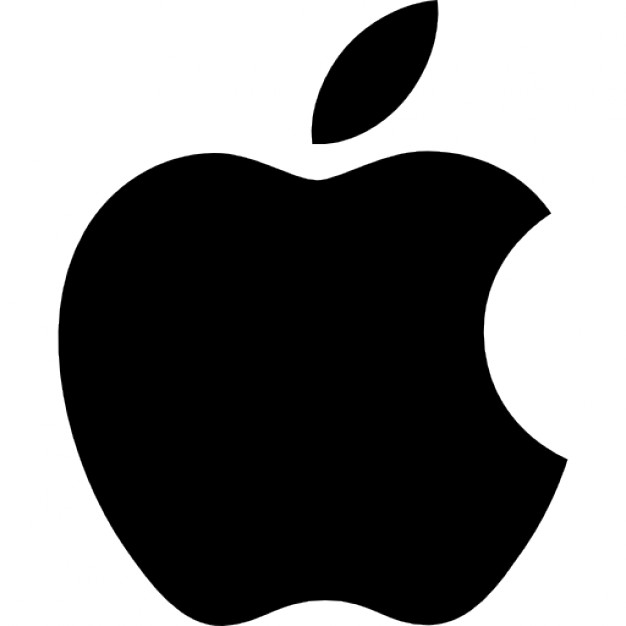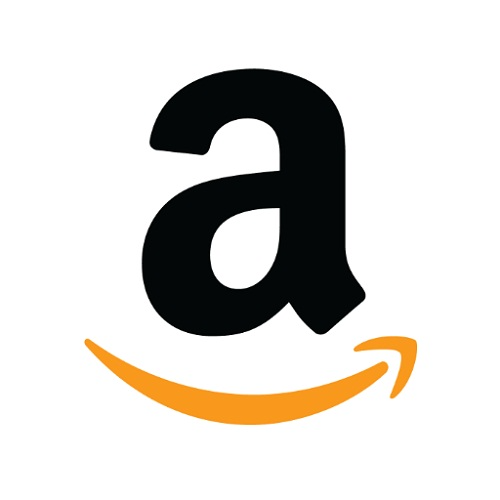
How A Former Surgeon Started A $42K/Month Marketing Automation Platform
Hello! Who are you and what business did you start?
Hey Starter Story! My name is Ivan Borovikov, and I’m the founder and CEO of Mindbox. I started the company more than 15 years ago without any external funding.
Today, Mindbox is a cloud-based marketing automation platform that unites a CDP, a loyalty program, omnichannel communications, and more. Our platform works in real-time, enabling brands to run complex omnichannel campaigns, personal promotions, and web and mobile personalization using a single comprehensive tool.
We provide a B2C marketing engagement platform for businesses of any size searching for the best marketing automation solutions.
Mindbox is well-known in Eastern Europe and has experience working there with 700+ clients, including L’Oréal, Panasonic, Burger King, KFC, JBL, United Colors of Benetton, and many others.
At the moment, we are creating a new company from scratch for American customers. We are a startup in the United States and we are building a new company to meet local demands. Now our revenue is about $7K/MO in the US and year-over-year growth is around 50%. So I'm pleased to share my knowledge with the entire Starter Story audience.

What's your backstory and how did you come up with the idea?
My journey to becoming an entrepreneur wasn't traditional. After completing my medical degree and working as a surgeon for five years, I realized that I wanted to explore my interests in business and technology. In 2002, while working as a surgeon, I tried to run my first IT business.
We started to help businesses with their first website development and promotional campaigns. Once, we even launched a promo campaign across several channels, including a website, a hotline, and SMS for JTI. After the success of our first international client, we got requests from many other brands. So in 2009, we started to build our first customer data platform for retailers in Eastern Europe.
The idea for Mindbox came from market demand and my passion for using data to create effective marketing campaigns that engage customers and drive sales. I wanted to create a platform that would enable brands to run complex omnichannel campaigns, personal promotions, and web and mobile personalization using a single comprehensive tool.
Back in the 2000s, there was a gap in the market for a platform that could offer this level of functionality.
Take us through the process of building the first version of your product.
As I mentioned, I started my first IT business at the beginning of the 2000s. We were developing websites, promo campaigns for small and medium businesses, and value-added services, such as paid ringtones.
In 2009, we started to build our first customer data platform. After the first successful project (which worked as a prototype), we gradually added new / revisited old functionality of the platform, based on the customers’ feedback.
Historically we’ve chosen .NET / C# stack - just because the top developer used it and all our successful projects were based on it. BTW, over time that developer has become an equal partner and CEO of the Mindbox group. The first functionality was about creating a unified database of retail promotion participants with different levels of access to the data via UI from different user roles (i.e. hotline operators, field staff, etc).
The data were pulled from different systems, normalized - and we built different logic of prize draws on top of it. And a set of reports, of course. Because we had no other source of money but the customers, we took any feedback quite seriously - if the customer is not satisfied, we’ll more likely run out of money.
So all these features - i.e. prize draw types, reporting, logic, integrations - were built based on the specific use cases. Most of them were custom, of course (and increased our support costs later - but who cares about it at the initial stage?)
By feedback I specifically mean readiness to pay for the future - because this is the only source of money for us, so we’re not able to develop something which would never be paid back.
Regarding the initial investment to launch the first project - I paid for it fully out of my pocket, spending roughly $30,000. After years, that first platform has grown into Mindbox, a customer engagement platform. Now we’re running the fifth version of it.
It is crucial that you begin with one, two, three, or a few clients who are paying you enough to keep the lights on.
Describe the process of launching the business.
Before launching Mindbox, I had already created IT products like websites and custom software. So Mindbox was established as a result of market demand when my clients asked me to help with marketing promotion.
After a short time, I understood that we could find more clients interested in a full-service marketing platform. We developed a platform and got our first clients. It was relatively easy - we were the only vendor able to repeatedly successfully support (from the IT perspective) promotions at scale. So soon we had a line of customers requesting our product.
That was the moment when Mindbox became a real business, not just an idea.
Since launch, what has worked to attract and retain customers?
At the very beginning, I was running around selling everything to everyone. The traditional founder sales way. We haven’t had any well-established l product yet, and in fact, every sale was completely custom with unique tasks, deliveries, deadlines, and so on.
As part of this process, several important things came to light. The first was the need to set the boundaries for the product vision - it led to the “integrated one-stop-shop marketing platform” formula.
Otherwise, no one but me could drive sales. We were able to formulate our values, mission, tools, and constraints that allowed us to say no to a portion of the prospects. It was a difficult process because how would you turn down a potential client who wanted to give you their money?
Second, we realized that we must work directly with clients. We were making most of our sales through advertising agencies. However, these are not the companies that are ultimately paying the money. They were intermediaries. So we decided to work directly with end-users to increase the feedback quality.
Don’t forget about survivorship bias. You're not interested in why the customer came to you. The most important is why they keep using the product or why they left.
Third, after formulating the product vision and its boundaries and constraints, we started to receive high-quality feedback from the clients and started to get paid for the value the product delivers - not for the custom (random) services.
Shortly after I realized that one-time contracts were not suitable for products like ours. As a result, we began to introduce subscriptions — long-term contracts with monthly payments.
Otherwise, you hire professionals to create a complex product for the clients, but the contract ends in December. And on December 31st, you don't know what to do with the people because there is no clear way forward for the following year because of the slow and inefficient purchase process in large corporations.
For me, the main thing to do to attract and retain customers is to stay focused on the value of your product. I mean, stay away from any features, tools, or special offers that conflict with your values.
After many years, we have developed a methodology for working with clients. We have a sales department, we use advertising, emails, calls - and everything that a normal sales department does.
The key difference in our strategy is in a few things:
1) We never boasted or told stories about ourselves (except the corporate culture - we’re a self-managing company and share a lot of tips&tricks about it) - we communicated only two things:
a) the success of our customers and the way they reached it. Mindbox, as the technology was only in the background
b) Educative content, how-to’s, research - anything which could be valuable for the marketers
2) Value for the customers is more important than Mindbox revenue. We have a thorough process in place to see if we could provide value. Our sales team is encouraged to recommend the competitors if we see that they could provide more value than Mindbox. Such cases are evaluated scrupulously though, and affect the product roadmap prioritization.
a) Over time Mindbox sales reps (we do call them “consultants”) have gained recognition as true experts, defending customers’ interests first - and we have a strong inflow from “word of mouth” sources.
How are you doing today and what does the future look like?
We are well-known in Europe, and our current focus is on the US market. Also, I spend part of my time mentoring and assisting a few other SaaS companies in finding a niche and growing faster. The main objective now is to maintain a steady flow of clients who come to us for our commitment and expertise.
We use all the available tools for it. However, we don't advertise ourselves on social media or at events. We mainly speak about the success of our clients and share some useful insights that we discovered in the process. We found out that there is a high demand for training and community building.
Through starting the business, have you learned anything particularly helpful or advantageous?
It is critical to start with profitable cases. Although it will be difficult, you must begin with one, two, three, or a few clients who are paying you enough to keep the lights on. As well as an understanding of who you're selling to - both in terms of the market segment and the decision-maker. That is important.
In the case of big companies and corporations, the worst thing that can happen to a startup is working for a single large client that generates more than half of your revenue and becomes dependent on them. You lose the ability to say no to them because you will lose half of your business. The corporation knows it right away and starts to manipulate you, causing you to dilute the value of your product.
It's quite risky to get dependent on a single big company. Perhaps what they want and what you accomplish with your product are just creating a product that no one else needs.
What platform/tools do you use for your business?
Dozens of platforms: Google Docs, Google Suit, Zoom, Notion, Microsoft, and the Apple ecosystem.
What have been the most influential books, podcasts, or other resources?
I would recommend reading "No Rules Rules: Netflix and the Culture of Reinvention" by Reed Hastings and Erin Meyer and "Reinventing Organizations" by Frederic Laloux. I also found useful sociocracy 3.0 by James Priest.
Advice for other entrepreneurs who want to get started or are just starting out?
For tech entrepreneurs, the scariest and most rewarding experience is not about trying to fend off the customer with a landing page, conversions, and funnels, but talking to people who use the product.
Don’t forget about survivorship bias. You're not interested in why the customer came to you. The most important is why they keep using the product or why they left.
We have all of our product sales processes optimized this way. We try to get the answer crystal clear. "Why are you using Mindbox now?" can be asked in many different ways. If let's say, there's not going to be one particular feature in Mindbox, are you going to continue to use it or not? It allows you to focus well.
Are you looking to hire for certain positions right now?
We are looking for an experienced B2B sales director. Write to me if you are interested and please follow us on LinkedIn; we might post some new vacancies soon.
Where can we go to learn more?
Please check out our LinkedIn and website. Various case studies from our clients are posted regularly.
Here is my LinkedIn. I would be happy to get in touch. Thanks for an amazing interview, and good luck to all who are launching their first businesses.

Download the report and join our email newsletter packed with business ideas and money-making opportunities, backed by real-life case studies.

Download the report and join our email newsletter packed with business ideas and money-making opportunities, backed by real-life case studies.

Download the report and join our email newsletter packed with business ideas and money-making opportunities, backed by real-life case studies.

Download the report and join our email newsletter packed with business ideas and money-making opportunities, backed by real-life case studies.

Download the report and join our email newsletter packed with business ideas and money-making opportunities, backed by real-life case studies.

Download the report and join our email newsletter packed with business ideas and money-making opportunities, backed by real-life case studies.

Download the report and join our email newsletter packed with business ideas and money-making opportunities, backed by real-life case studies.

Download the report and join our email newsletter packed with business ideas and money-making opportunities, backed by real-life case studies.


























